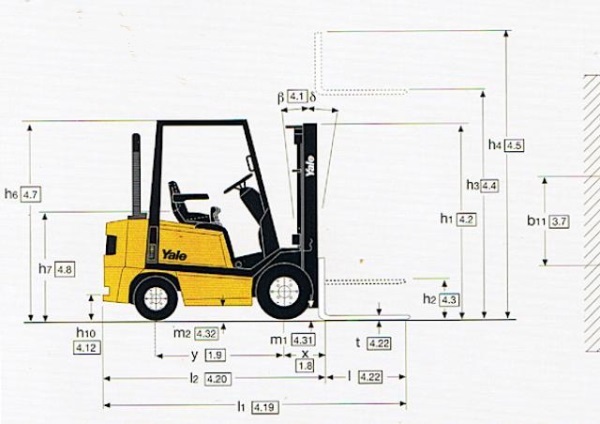Forklift Technical Information
The largest forklift operator training website in the world
![]()
![]()
Fork Lift Internal Combustion Engines
There are three types of internal combustion engines used on fork lift trucks although one of these is only used very rarely.
Diesel engines
These are very popular in counterbalanced fork lifts although their physical size makes them an untenable proposition for other machines the exception being rough terrain trucks and sideloaders.
They obviously use diesel fuel but can also legally use so called 'red' diesel which is cheaper than normal fuel. Note that trucks in use on the public highway cannot legally use red diesel.
The benefits of diesel propelled fork lifts are that the truck can be made very powerful with the ability to climb quite steep gradients. Typically this type of truck will also have a fast lift speed. It is not uncommon to see this type of truck designed to traverse rough ground and fitted with either pneumatic or supercushion tyres.
Some truck manufactures use their own manufactured engines whilst others buy them in from companies such as Perkins Engines and the like.
One problem with diesels not generally mentioned is that they give off large amounts of sulphur. This means that they should not be used in confined spaces and if they have to be, a full risk assessment should be carried out first. In an effort to overcome this problem some trucks are fitted with LP Gas engines but they are far from non toxic as explained below.
Liquefied petroleum gas engines
Based on conventional internal combustion engines these burn a lot cleaner than diesels although they also should not be used in confined spaces as they give off quantities of nitrous oxide which is of course, toxic. The term 'clean' really refers to the visible exhaust gasses which are infinitely cleaner than those from a diesel and as such may sometimes be used where products would otherwise be contaminated such as some types of food handling.
An LP Gas truck has a very simple carburetor which is little more than a simple venturi through which air is sucked allowing the gas to enter the engine prior to ignition. The fuel burns more completely than a petrol engine and therefore the exhaust emissions are much cleaner.
A few points about LPG systems that should be noted:
If the accelerator is pressed hard down to the floor during starting the engine will often fail to start! This is because this action removes the vacuum from the inlet manifold which then causes a safety valve to shut off the gas supply! If this does happen, only press the accelerator down a little. More modern systems connect the aforementioned valve to the oil pressure gauge tapping so the problems starting the engine do not exist.
LP Gas cylinders are heavy - particularly when full. If it is too heavy, the person changing it should seek help. The Manual handling regulations, (1992), apply in these cases.
The gas bottle should be mounted the correct way on the truck with the arrow pointing down. If this is not done the bottle may appear to be empty when there is in fact, some fuel left.
Petrol engines
Because of the contamination caused by this type of motive power they tend not to be used in the United Kingdom. I understand that they are used in some parts of the USA.